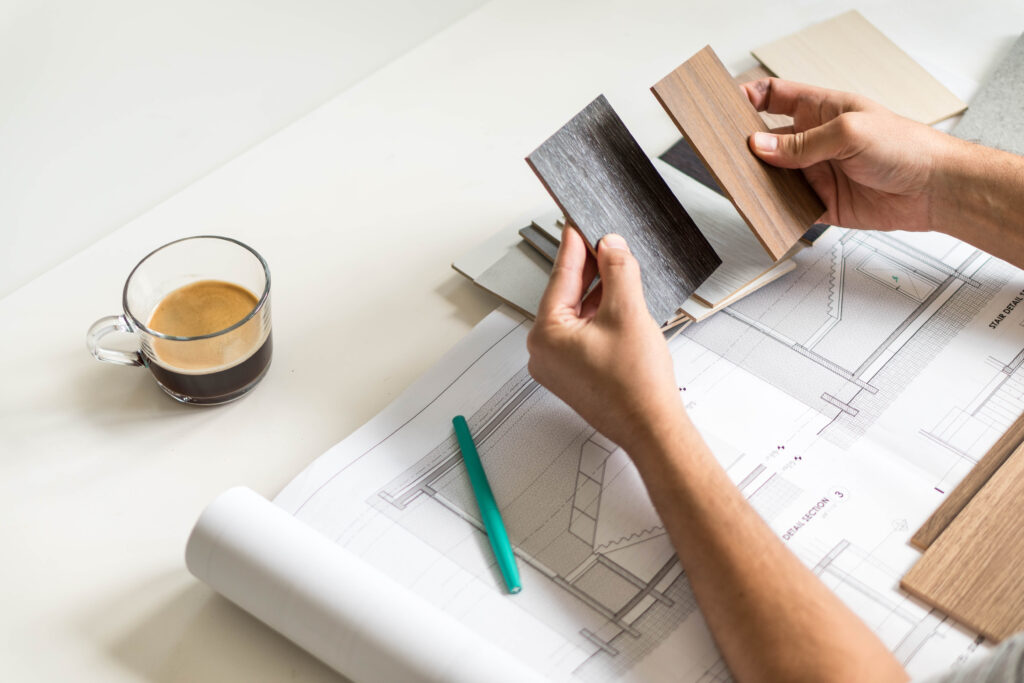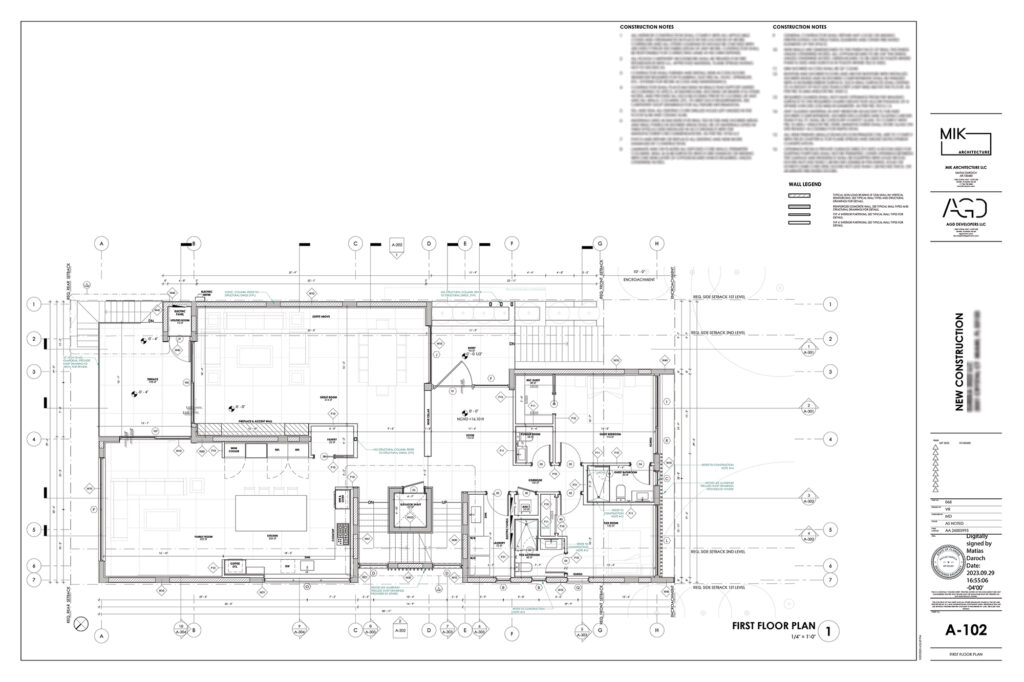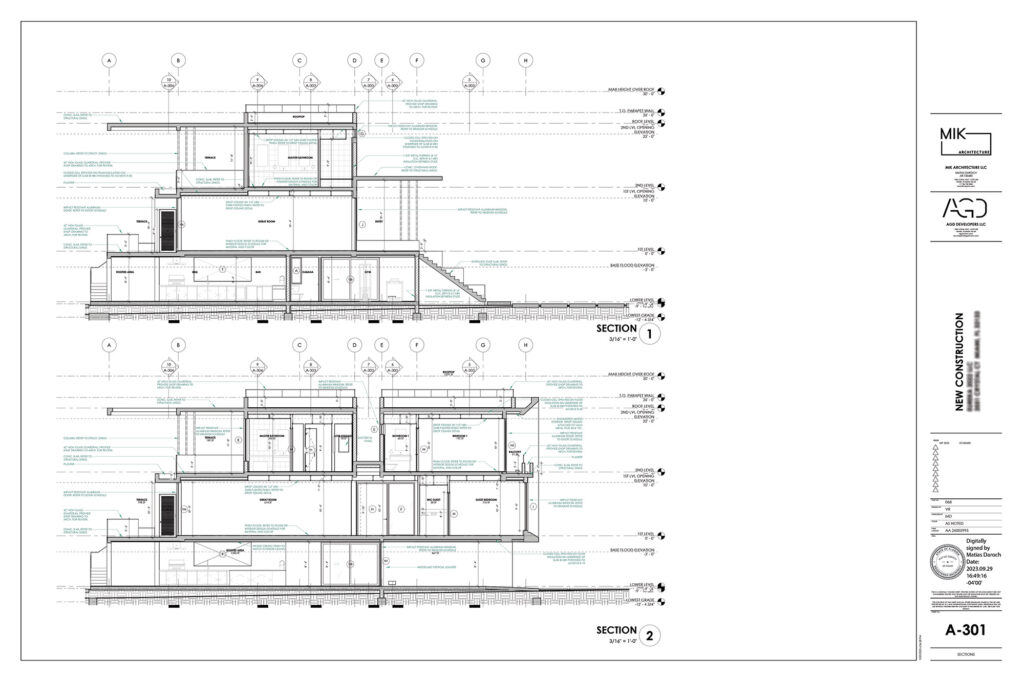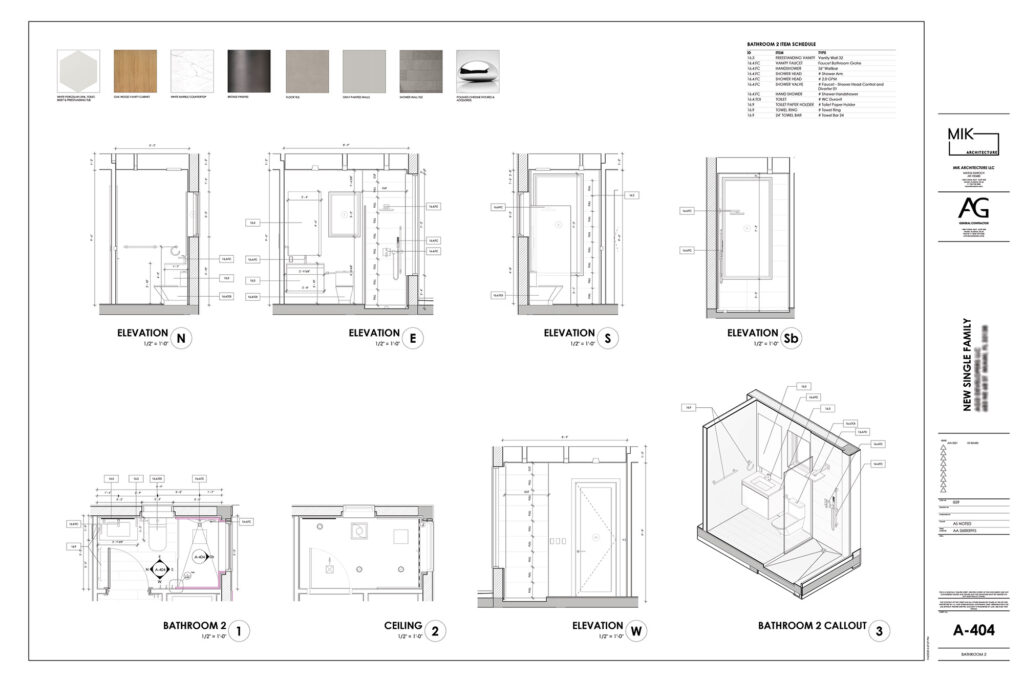
Real estate development and investment success starts with expert architectural design that creates high-value, attractive properties. To achieve these goals of profitability and quick turnover, it helps to fully understand the project views (Architecture Plans, Sections, Elevations, and Callouts) that show every design stage, guide the construction process, and work toward a completed saleable space.
These terms define a variety of different building design views that give different yet comprehensive information about architectural details.
Plans – Also called a floor plan, this gives a two-dimensional, top-down view of a building’s size and shape. Each level or story has its own plan.
Sections – Similar to a cross-section, this reveals a top to bottom view of a building as if it were sliced vertically.
Elevations – These views offer a two-dimensional drawing of the building exterior. It shows architectural features like doors and windows.
Callouts – Get a close-up view of a specific part of the overall drawing to better visualize details. This section is drawn to a larger scale than the rest of the space.
A well-designed and constructed space needs careful planning to bring it to fruition. Each view listed above provides necessary information that allows everyone involved to understand measurements, material needs, and overall aesthetics. The individual views suit specific needs, but together, they create a complete picture of the property.
All of these illustrations are two-dimensional. However, the designers approach them in different ways and with unique requirements in mind.
Plans give a comprehensive, overhead view of the entire building layer or floor. This provides not only a general understanding of layout but also measurements necessary for the construction process. These may include site plans that cover the entire property, floor plans that cover only the exterior walls and interior spaces, and roof plans that take an exterior look to show roof slope, chimneys, vents, and similar accents.

Sections slice the building vertically to provide specific information about the structure and how rooms, hallways, and staircases or elevators fit inside the exterior shell. More importantly for the construction teams, they also show support elements like beams and load-bearing walls. They help diverse teams organize work throughout the design and building processes.

Elevations give a clear view of the exterior of the entire building. Each project will have one elevation for each side of the structure. A rectangular house will have four while a more complex building plan may have many more. These include information about exterior elements like doors and windows as well as specifics about material and color choices. Multiple elevations may exist to better visualize all options before making final design decisions. These design illustrations help all parties come to a consensus on the look and feel of a property before final construction tasks.

Callouts give detailed views of specific interior or exterior spaces. They use a larger scale than the rest of the floorplan in order to better reveal detailed work or specific elements. Common spots that often have callouts include stairwells, kitchens, and bathrooms. They also provide space for extra notes or comments about final décor options like tile types, paint colors, or hardware.

Even the smallest real estate project needs careful communication and coordination to reach a successful end. High-quality architectural plans with precise details and easy-to-understand formats make this possible. More specifically, they keep every person and team involved with the project on the same path from start to finish.
Architects with quality plans reduce errors more quickly and confidently make well-informed design decisions; Investors better understand the project's look and feel like upon completion, to help them determine marketability and potential returns. And lastly, city reviewers and regulatory departments need these plans to ensure code compliance for a quicker and less stressful building permit process.
Building Information Modelling technology provides today’s architects with new possibilities when it comes to creating and managing a variety of plans for any type of building project. BIM models enhance quality, provide more accurate data, boost visualization, and foster better coordination and collaboration between all service teams and stakeholders.
By virtually building the project architects can easily create top-notch plans, elevations, sections, callouts and more. Then, they can pass them on to design, regulatory, investment, or construction teams that will carry the project to completion.

BIM provides:
Precision – Every element and design detail on a BIM model holds specific data about it. This guarantees accuracy from one plan view to another so there are never any discrepancies or confusion during the design and building process. A change made to measurements on a floorplan, for example, will automatically populate throughout the entire project's view collection.
Coordination – Architects, engineers, and construction leads must integrate fully with each other on projects to avoid errors and miscommunications that lead to delays and unsatisfied stakeholders. BIM software includes clash detection tools that help the user identify and alert to possible problems. The quick notifications, in turn, promote faster resolutions, improve communication, and help avoid expensive delays and errors.
Integration – Get a holistic view of a property in a user-friendly, integrated format that allows for big picture understanding and management. BIM allows all parties to view plans, sections, elevations, and callouts as seamless parts of the overall model. This allows stakeholders to make quicker design decisions and changes with a robust visual integration.
Efficiency – Every project goes through multiple design phases that include a variety of changes and upgrades. With BIM, architects can make these changes at any stage of the process. This speed and flexibility promote faster iterations to keep the project on a strict timeline and greater efficiency that can reduce costs and keep stakeholders satisfied.
Potential investors and other interested parties who do not have in-depth architectural or construction knowledge can understand BIM views better. The enhanced digital design, included product information, and well-coordinated views allow for quicker decisions and clearer communication.
Successful building projects are simply not possible without detailed, specific, and accurate architectural views. BIM offers the best plans, sections, elevations, and callouts when it comes to design options, decision making, collaboration, accuracy, and efficiency. From initial design inspiration to final construction tasks, BIM software provides a comprehensive solution for property development success.
